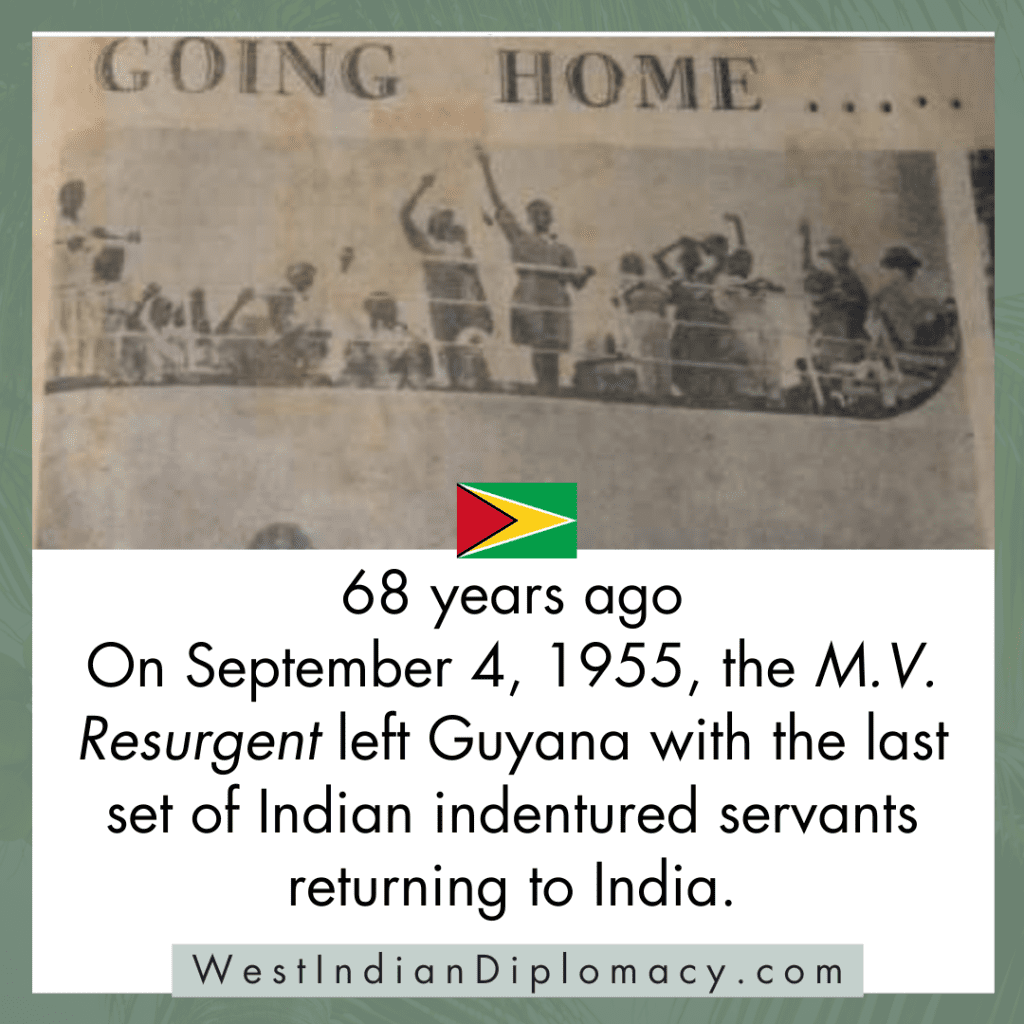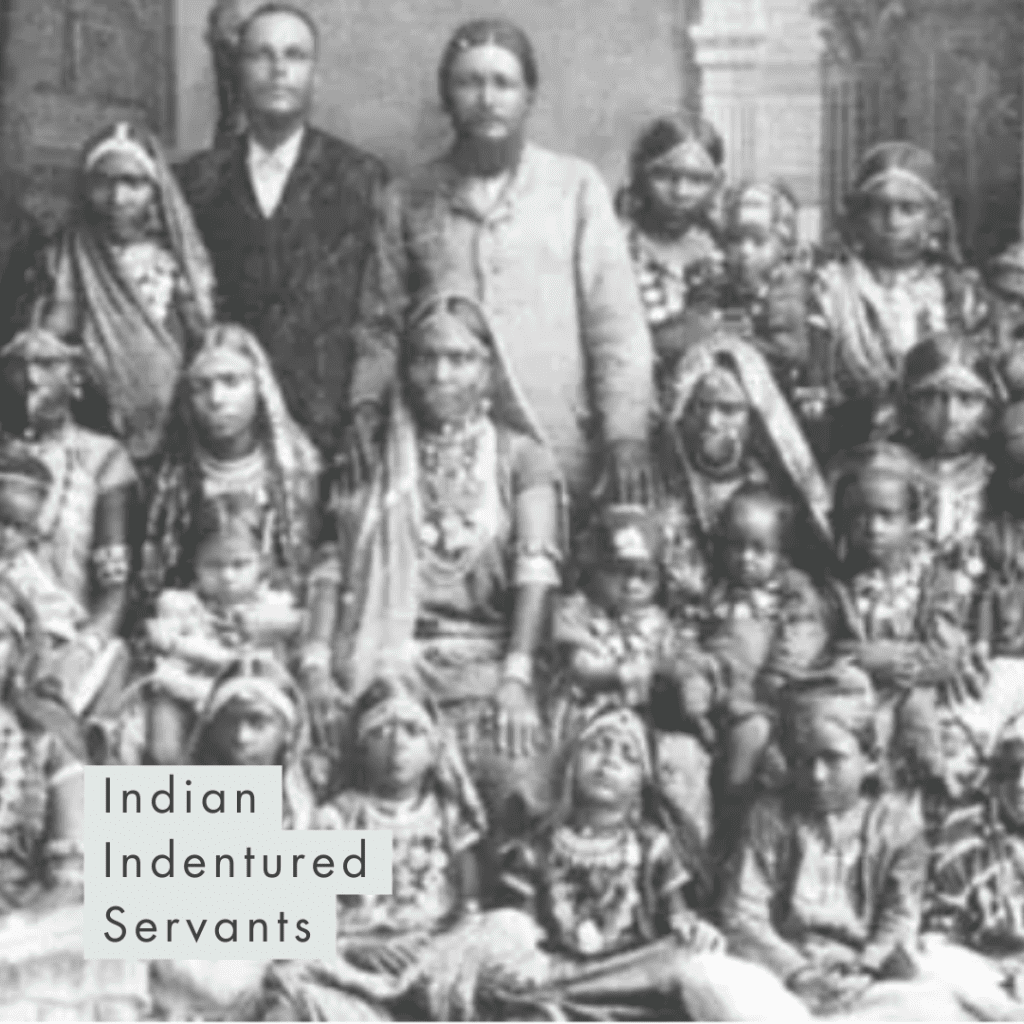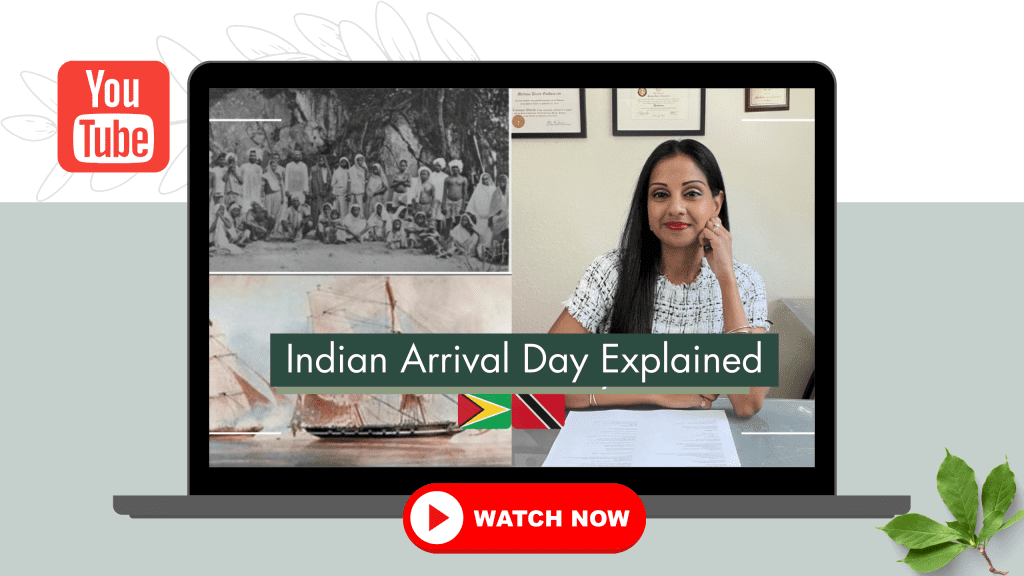The MV Resurgent: Returning Ship from Guyana to India

On September 4, 1955, the MV Resurgent departed Guyana and transported the last set of Indian indentured servants and their descendants to India.
It was the last “official” ship. Thousands of Guyanese traveled to Sprostons’ No.1 Wharf in Georgetown to see the ship off.
The ship carried about 243 passengers.
“Forty-four people changed their mind at the last minute, some before and others on the day of departure, with one older man jumping ship just before it sailed and yelling: ‘Nah me bhaaya!’”

Indian indentured servants continuously fought to return to India from the beginning.
On May 5, 1838, the first Indian indentured servants arrived in Guyana (and the Caribbean) aboard the Whitby and Hesperus.
That same year, “a third of the coolies on Plantation Belle Vue escaped by night.” They were desperate to find a way back to India. These Indian indentured servants trekked through the swamps and even the shark-filled Demerara River. There was a 25% death rate for this first set of indentured servants in Guyana.
The escape pattern would continue. Some would perish from the untamed elements of Guyana and starvation. Many escapees would be caught and returned to their plantations.
The fact that some believed that they could return to India by walking highlights their initial lack of understanding of the indentured servitude system, and the level of exploitation they faced during recruitment.
The initial indenture contracts guaranteed a free return passage. However, even the very first set of indentured servants had an uphill battle trying to return. Their contracts expired in January but the return ships did not arrive on time. Plantation Belle Vue refused to feed the indentured servants unless they continued to work.
Ten Indian men signed an affidavit that read “We don’t want to wait. We want to be sent immediately to our country, according to our agreement when we left home.” The Plantation Belle Vue group even stopped eating for days because they feared that accepting food would leave them bound to the plantation owners.
A governor in Guyana wrote to London about the plantation owners in Guyana. The plantation owners had a “delusion [that] the coolies [wanted] to remain in [Guyana]” even though they knew that most workers had been separated from their families.
In 1843, they were finally able to return on the first return ships named the Louisa Baillie and Water Ditch.
The difficulty in returning to India lasted the entire indentureship era. After the first set’s delay, colonial governments provided incentives to stay like money or land.
They then implemented obstacles to return. For example, the colonial governments required that Indian indentured servants be in the colony for 10 years before returning. After 1895, there was no longer free return passage (only the potential for subsidy).
32% of Indians in Guyana returned to India, but 75% of all indentured Indians in the Caribbean would not be able to return to India.

Sources:
Coolie Woman by Gaiutra Bahadur
The Last Ship: Repatriation from British Guyana to India by Nalini Mohabir

By Melissa Ramnauth, Esq. | This content is copyright of West Indian Diplomacy, LLC and may not be reproduced without permission.

She runs West Indian Diplomacy, a Caribbean blog aimed at promoting West Indian history and business in the global marketplace. Melissa has been an attorney for over 10 years. She currently focuses on trademark registration, trademark searches, and office actions. She also has extensive legal experience in the areas of trademarks, copyrights, contracts, and business formations. She owns her own Trademark Law Firm that is virtually based out of Fort Lauderdale.
Please Sign Our
Petition to Preserve Our Ship Records
By Submitting this Form
This page may contain affiliate links and ads at no extra charge to you. If you purchase something from these links and ads, West Indian Diplomacy may earn a small commission that goes towards maintaining the website and sharing our history.
Book Recommendations
The First East Indians to Trinidad: Captain Cubitt Sparkhall Rundle and the Fatel Rozack
History of the People of Trinidad and Tobago
An Introduction to the History of Trinidad and Tobago
